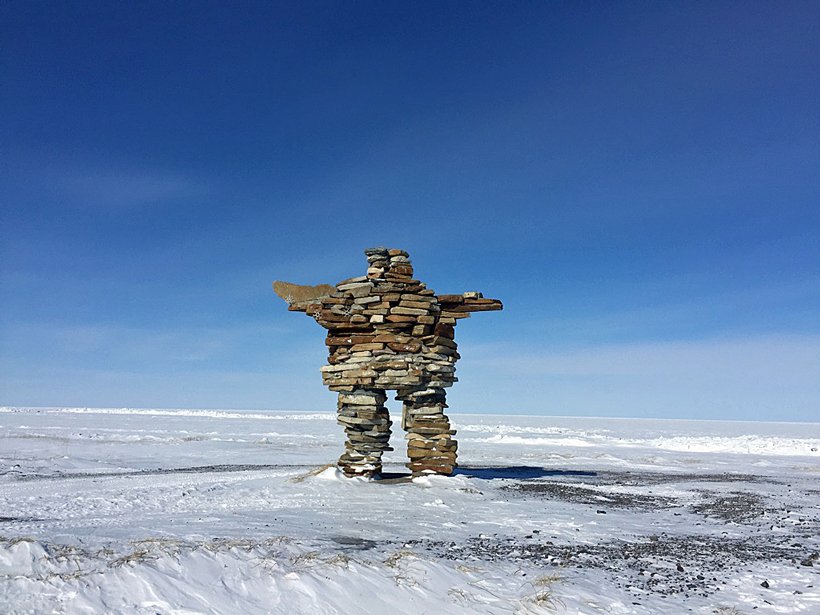The T-MOSAiC project addresses the question, What are the implications of changing sea ice, oceanography, and climate of Arctic seas for the surrounding land-based geosystems, ecosystems, and human systems?
The ongoing loss of Arctic sea ice is likely to have wide-ranging effects on northern lands. The International Arctic Science Committee (IASC) has responded to the urgent need for an improved understanding of these effects by initiating the circumpolar project Terrestrial Multidisciplinary distributed Observatories for the Study of Arctic Connections (T-MOSAiC). This project, which is linked to the IASC oceanographic project Multidisciplinary drifting Observatory for the Study of Arctic Climate (MOSAiC), addresses the question, What are the implications of changing sea ice, oceanography, and climate of Arctic seas for the surrounding land-based geosystems, ecosystems, and human systems?
The fourth T-MOSAiC planning workshop took place during the Arctic Science Summit Week in Arkhangelsk, Russia, and comprised presentations by established and early-career researchers, followed by a series of group discussions. It brought together expertise from all five IASC working groups (terrestrial, cryosphere, marine, atmosphere, and social and human sciences). The workshop aimed to identify subject areas for interdisciplinary collaboration; crosscutting linkages with the social sciences; international partnerships, including opportunities for Indigenous participation; and specific objectives for land-based implementation activities.
Latitudinal gradients for T-MOSAiC research were identified, from northern to southern Greenland, across ecozones of the Canadian Arctic, and from the Lena River delta to the vast interior of Siberia. Other environmental gradients for analysis include lakes and rivers downstream of receding glaciers and the increased risk of damage to built infrastructure near eroding coastlines. The T-MOSAiC Rapid Arctic Transitions due to Infrastructure and Climate group (RATIC) will undertake observations and data syntheses related to infrastructure, and discussion topics at the meeting included the need for increased permafrost monitoring in settlements and industrial areas.
T-MOSAiC research on system connectivity discussed at the workshop included the ways that permafrost thaw slumps mobilize mercury and transport this material into Arctic rivers and coastal Arctic seas. The discussions also drew attention to the role of dust in connecting northern landscapes, ice, and water and dust’s effects on biogeochemistry and albedo—a topic that needs T-MOSAiC’s close attention at a circumpolar level. Climate-related thresholds discussed at the meeting included the compelling example of fires in high-latitude forests and tundra and the increasing likelihood of such fires due to rapid warming.
The workshop culminated in formalizing a set of action groups that will now focus on specific subject areas and outputs within the overall T-MOSAiC framework. These groups aim to coordinate observation and synthesis activities on land-based environments throughout the circumpolar North, and their tasks range in scope from gas flux and energy balance measurements to remote sensing of northern landscapes and Indigenous issues such as food and water security. New collaborations are welcome, and further details, including contact information, are available at www.t-mosaic.com.
We thank all members of the T-MOSAiC committees for their planning input for this workshop, D. A. Skip Walker and Jana Peirce for their leadership of the RATIC/T-MOSAiC collaboration, Markus Rex for his encouragement and support of this MOSAiC-derived initiative, and IASC for travel funds to allow early-career researchers to participate.
—Warwick F. Vincent ([email protected]), Laval University, Quebec, QC, Canada; João Canário, University of Lisbon, Portugal; and Julia Boike, Alfred Wegener Institute, Potsdam, Germany
Citation:
Vincent, W. F.,Canário, J., and Boike, J. (2019), Understanding the terrestrial effects of Arctic sea ice decline, Eos, 100, https://doi.org/10.1029/2019EO128471. Published on 17 July 2019.
Text © 2019. The authors. CC BY 3.0
Except where otherwise noted, images are subject to copyright. Any reuse without express permission from the copyright owner is prohibited.

